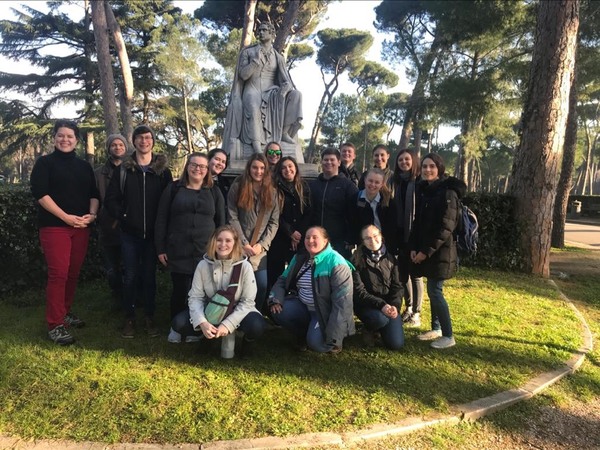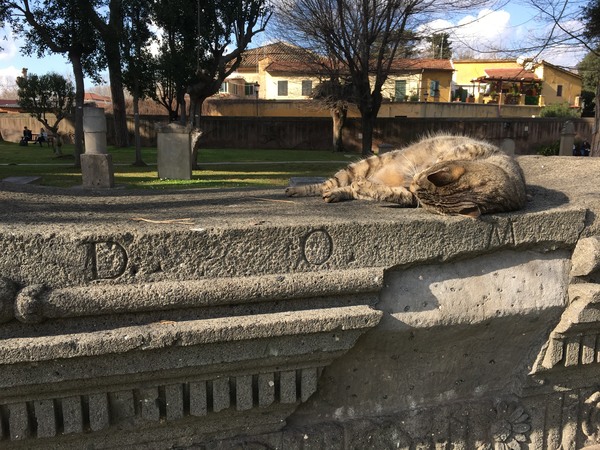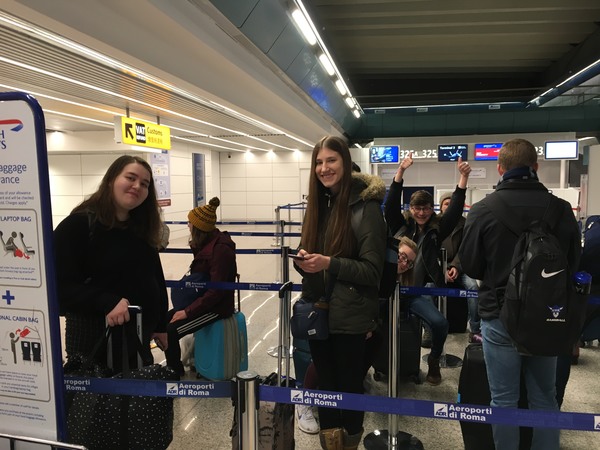Our final days in Rome have instilled in us a sense of its timeless beauty. We’ve come to understand why English authors flocked to Italy for creative inspiration. The warmer weather, the Roman Ruins, and the wealth of artistic history were incentive enough for writers such as Lord Byron, John Keats, Percy and Mary Shelley. In the last two days we have visited the Borghese Gardens, the Sistine Chapel, the Spanish Steps, and the Pantheon—must-sees for anyone visiting Rome.
The site that is less well-known to the average tourist was perhaps the one which was most rewarding. On Monday we visited the non-Catholic cemetery otherwise known as the Protestant cemetery of Rome. Percy Shelley and John Keats—two remarkable poets who died incredibly young—are buried here. While in this space, I couldn’t help but reflect on the beginning of this trip when we visited Keats’s house in Hampstead. The house represented some of the most creative and inspiring years in his life; however, during our time there we couldn’t help by dwell on his untimely death. Therefore, many of us were anticipating visiting Keats’s grave in Rome as a conclusive and emotional moment in the trip. But the cemetery surprised us. Amidst the tombstones were daisies, ferns, and other numerous types of foliage that gave the space a sense of softness and warmth. The sun danced through the trees, creating spotlights in the grass where the cemetery’s many cats lounged in the light. The cats were friendly and welcoming; they made sure to be pet by as many of us as possible. As Meta read lines from Shelley’s famous poem “Adonis,” the birds above paused to perch as if they too were listening. “There is life in this cemetery” I thought as I sat beside John Keats’s grave and ran my fingers through the nearby ferns. Our time spent here was reflective and peaceful, but it also felt like closure for what has been a month of tirelessly grappling with the same questions as the Romantics; what does it mean to live and die in a world unimaginably larger than oneself?
With our new knowledge and “gained experience” we now venture back to the U.S. and take these lessons with us into a variety of different settings. Many of us will soon return to Luther to begin spring semester. Others of us are scattering to various school districts to student teach. A few lucky members of our group will continue their study abroad experience as they now embark on semester-long programs in Münster and Malta! The work we’ve done in Europe this month will follow us into our immediate futures and the happy memories made will remain in our memories for many, many years to come. Ciao!
An Iowa College in the Liberal Arts Tradition
Home » January Term 2020 Course Blogs » Europe » In Frankenstein's Footsteps: The Keats-Shelley Circle » There is Life in this Cemetery
Home » January Term 2020 Course Blogs » Europe » In Frankenstein's Footsteps: The Keats-Shelley Circle » There is Life in this Cemetery
There is Life in this Cemetery
By Emily Anderson






